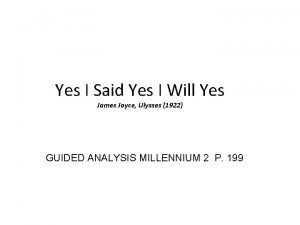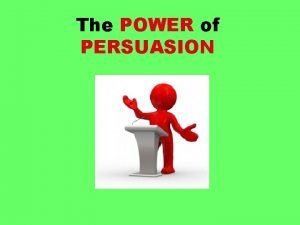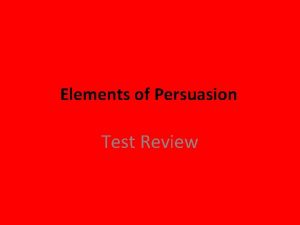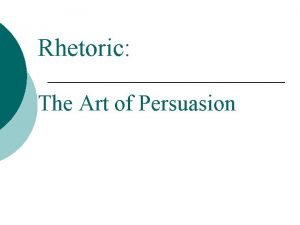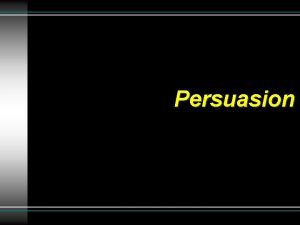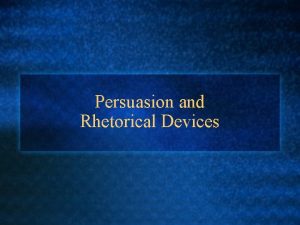Elements of Persuasion Test Review ArgumentPersuasion Terms Yes






- Slides: 6

Elements of Persuasion Test Review

Argument/Persuasion Terms • • • (Yes – define them) Anaphora Parallel structure Rhetoric Thesis Common place assertion Diction Ethos Pathos Logos

Argument/Persuasion Terms - definitions Ø Anaphora – repetition of the same word or phrase at the beginning of successive clauses Ø Parallel structure – the repetition of similar grammatical structures to link related ideas Ø Rhetoric – the skillful use of language to persuade an audience Ø Thesis – the statement that describes the main point/controlling idea of a composition/essay Ø Common place assertion – a statement that many people think is true Ø Diction – the choice of words & arrangement in which they are used Ø Ethos – an appeal to credibility or ethics Ø Pathos – a persuasive appeal to emotions Ø Logos – an appeal based on logic Ø Rhetorical Question – is asked to make a point; no answer expected

“Position on Dodge ball in Physical Education” • What is the NASPE’s position on today’s children regarding dodge ball? • What widely accepted value does the NASPE use to persuade you? • Find one example of logos • The NASPE dislikes dodge ball because…?

“The Weak Shall Inherit the Gym” • What is the tone the author uses to persuade you? • List examples of humor the author uses to persuade you. • Why do children need to play dodge ball according to the article? • List an example of emotional appeal

“No More Pep Rallies” • Find an example of Common Place Assertion • What is the writer trying to persuade us to do in the article. • Find an example of opinion in the article • Find an example of a rhetorical question in the article. • Find an example of a fact in the article
